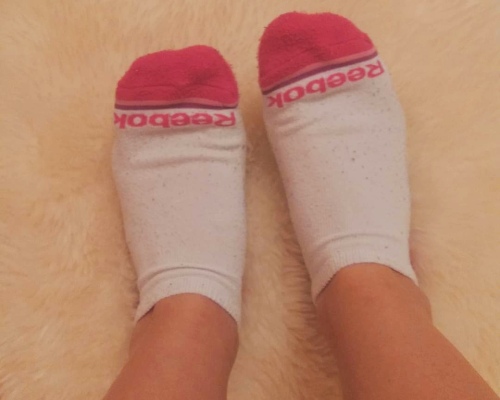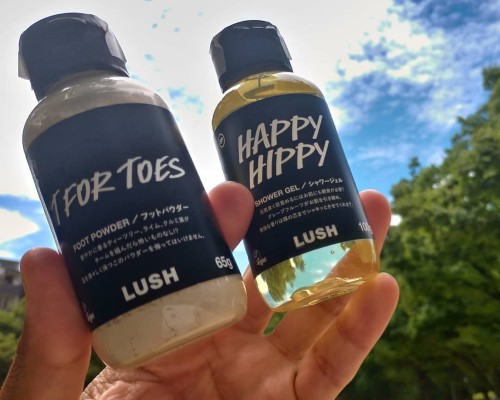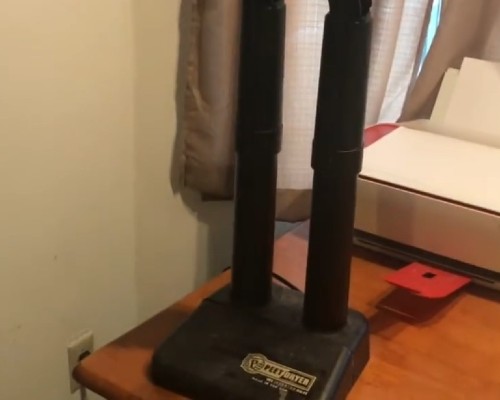Last Updated on August 1, 2024 by Sarah Jaffe

Are your feet feeling like they’ve declared war on your work boots? Are they slipping and sliding like they’re auditioning for a skating show? We understand the pain and discomfort caused by sweaty feet in those heavy-duty work boots. That’s why we’re here to spill the beans on how to keep your feet dry and happy.
Sweaty feet in work boots can be a real nuisance. Also, they create a breeding ground for bacteria, leading to unpleasant odors and possible infections. Yikes! Nobody wants that, right? So, let’s roll up our sleeves and tackle this issue head-on.
Ensuring your feet stay dry in work boots is crucial for your overall comfort and hygiene. We know how uncomfortable it can be when your feet are drenched in sweat, squishing around with every step. It’s like carrying a mini-swamp in your boots! Plus, all that moisture can cause blisters, irritation, and even foot fungus. Ouch! We’re all about preventing those pain points, my friends.
We want to equip you with comprehensive strategies to combat sweaty feet in your trusty work boots. Our tips and solutions will keep your feet dry and happy during those long workdays. Say goodbye to that clammy feeling and hello to comfort and confidence on the job!
Stay tuned as we dive into the nitty-gritty details of wearing work boots without sweating. We’re about to reveal the secrets that’ll have you strutting your stuff with cool, dry feet in no time. Let’s kick this sweating problem to the curb!
Understanding the Causes of Feet Sweating

Are you ready to unravel the mysteries behind feet sweating? In order to prevent excessive sweating in boots, let’s find out what physiological mechanisms cause it.
Physiological reasons behind feet sweating
Our incredible bodies house over 2 million sweat glands, with a whopping 250,000 of them residing in our feet. Sweating is a natural process that aids in regulating body temperature. The sweat glands in our feet work hard, producing sweat that evaporates and cools the skin.
Stress, genetics, and medical conditions like hyperhidrosis can all contribute to excessive sweating. It’s like having a built-in cooling system, but sometimes it goes into overdrive!
Factors that contribute to excessive sweating in work boots
When it comes to excessive sweating in work boots, several factors come into play. Let’s break it down:
1. Materials: Wearing work boots made of non-breathable materials can be a recipe for sweaty feet. These materials restrict airflow, trapping heat and moisture inside the boots.
2. Insulation: Poor insulation in work boots can lead to increased sweating. Your feet may sweat more if you don’t have adequate insulation in your boots.
3. Tight-fitting boots: Snug boots can hamper sweat evaporation, creating a humid environment inside the boots. This can result in excessive sweating and discomfort.
To effectively manage foot sweating, it’s important to address the root causes. This means choosing boots that breathe well, have good insulation, and fit properly. Treatment for hyperhidrosis may also involve medication or other treatments.
It is possible to reduce sweating by using foot powder or moisture-wicking socks. Foot hygiene is also important, such as washing your feet regularly and keeping them dry.
8 Tips to Keep Feet from Sweating in Work Boots

In industries such as construction, manufacturing, and agriculture, work boots are a necessity. They protect and support your feet throughout the day to keep them comfortable and safe.
However, one downside to wearing work boots is the potential for your feet to sweat excessively. This can irritate the skin, produce bad odors, and cause blisters and athlete’s foot. Let’s discuss 8 tips to help keep your feet from sweating in work boots.
1. Selecting the right work Boot
Selecting the right work boots is of utmost importance when it comes to preventing feet from sweating excessively while wearing them.
1. Choose Breathable Materials
Opt for work boots made of breathable materials such as leather or mesh. These materials allow air to circulate freely, preventing moisture buildup within the boots. By increasing ventilation, breathable work boots minimize sweating.
2. Look for Moisture-Wicking Properties
Seek out work boots that possess moisture-wicking properties. This feature enables the boots to absorb sweat and prevent odor. By choosing work boots with this capability, you can maintain dry and comfortable feet. To further enhance sweat absorption, wear moisture-wicking socks made from wool or bamboo.
3. Consider Insulation
When it comes to insulation, strike a balance. Work boots with good insulation can regulate the boot’s temperature and prevent excessive sweating. Choosing warm boots, however, may result in sweating and discomfort.
4. Ensure Proper Fit
It is crucial to ensure that your work boots fit properly and provide ample room for your feet to breathe. A tight-fitting boot can trap moisture, preventing sweat from evaporating and causing sweaty feet. Optimal fit promotes comfort and allows for better airflow.
5. Choose Durable Work Boots
Prioritize the durability of work boots to ensure they can withstand the wear and tear of your job. High-quality work boots are more expensive, but they last longer and provide reliable performance in the long run.
2. Proper Sock Selection
Proper sock selection is vital for preventing sweaty feet in work boots. Moisture-wicking socks offer several benefits in reducing foot sweating. They keep your feet dry and minimize sweat buildup by wicking moisture away from your skin. Aside from helping control sweat, they enhance comfort, prevent blisters and hot spots, and help control odor.
When choosing socks for work boots, opt for moisture-wicking options like merino wool or synthetic fiber socks. Merino wool provides excellent moisture management, temperature regulation, and natural odor resistance.
Synthetic fiber socks, such as those made from polyester or nylon, also offer moisture-wicking capabilities. Merino wool and synthetic fibers can be combined to create comfortable, moisture-wicking, and durable socks.
Socks made of moisture-wicking and breathable materials are more effective than cotton socks that hold moisture. For added comfort and a proper fit, choose socks with cushioning and arch support.
Recommended socks for work boots include Darn Tough Vermont Men’s Merino Wool Boot Sock and Thorlos Experia XCCU Thin Cushion Running Socks.
3. Effective Foot Hygiene Practices
Effective foot hygiene practices are crucial for preventing sweat and odor when wearing work boots. Here’s a daily foot care routine and some recommendations for soaps and foot cleansers that can help:
Daily Foot Care Routine
- Wash your feet thoroughly with warm water and a gentle soap or foot cleanser.
- Pay attention to the spaces between your toes and the soles of your feet.
- Use a soft brush or washcloth to exfoliate the skin gently.
- Rinse off the soap and pat your feet dry, especially between the toes.
- Apply a foot moisturizer to keep the skin hydrated.
Appropriate Use of Antibacterial Soaps and Foot Cleansers
- Look for antibacterial soaps or foot cleansers that contain ingredients like tea tree oil or eucalyptus oil. These natural antibacterial agents can help combat odor-causing bacteria.
- Skin can become dry and sweaty when harsh soaps strip it of its natural oils.
- You should use an antibacterial soap or foot cleanser regularly, especially if you have a bad foot odor.
- O’Keeffe’s Healthy Feet Exfoliating Foot Cream: Removing dead skin cells while nourishing the skin is the purpose of this foot cream.
- Neutrogena Rainbath Refreshing Shower and Bath Gel: While not specifically designed for feet, this shower gel leaves your skin feeling fresh and clean.
Benefits of Regular Foot Exfoliation and Moisturizing
- Exfoliation removes dead skin cells, allowing for better airflow and reducing the chances of sweat and odor buildup.
- In order to prevent excessive sweating and odor, moisturizers maintain the skin’s natural barrier.
- Regular foot care promotes overall foot health, reducing the risk of infections and discomfort.
Remember, everyone’s skin is unique, so it’s essential to consider any individual sensitivities or allergies when selecting products.
4. Utilizing foot powder and antiperspirants

Utilizing foot powders and antiperspirants can be effective in reducing foot sweating when wearing work boots.
Role of Foot Powders in Reducing Foot Sweating
Foot powders help absorb moisture, control sweat, and keep the feet dry. Ingredients like talc, cornstarch, and baking soda have absorbent properties, which will keep your feet from rubbing against your boots. Foot powders can also provide a cooling sensation, minimize odor, and promote overall foot comfort.
Types of Foot Powders and Antiperspirants to Consider
- Talc-Based Powders: These powders absorb moisture effectively and provide a smooth feel on the skin.
- Cornstarch-Based Powders: Cornstarch is a natural alternative to talc and helps absorb moisture.
- Baking Soda-Based Powders: Baking soda neutralizes odor and helps control sweat.
- Antiperspirants: Antiperspirants contain aluminum-based compounds that block sweat glands, reducing perspiration. They are available in roll-on, spray, or stick forms specifically designed for feet.
Recommended Foot Powders and Antiperspirants
Gold Bond Medicated Foot Powder: This talc-based foot powder provides a cooling effect while absorbing moisture and controlling odor.
Certain Dri Everyday Strength Clinical Antiperspirant: Designed specifically for feet, this antiperspirant provides maximum strength sweat, and odor protection, keeping your feet dry throughout the day.
Proper Application Techniques and Frequency
- Ensure your feet are clean and dry before applying foot powder or antiperspirant.
- Sprinkle a small amount of powder onto your feet, focusing on areas prone to sweating.
- Gently massage or rub the powder into the skin to ensure even distribution.
- For antiperspirants, follow the product instructions and apply a thin layer to the soles of your feet.
- Make sure foot powders and antiperspirants are applied daily, especially before wearing work boots.
Remember to discontinue use if you experience any irritation or discomfort and consult a healthcare professional if necessary.
5. Maintaining Boot Dryness
Drying work boots thoroughly is essential to remove any accumulated moisture from sweat or external sources.
In damp or wet boots, bacteria and fungus grow, causing unpleasant odors, skin irritations, and foot sweating. Furthermore, damp boots can be uncomfortable and compromise their durability over time.
Tips for Drying Boots Effectively after Each Use
- Remove the insoles and laces from the boots to facilitate better airflow.
- Wipe off any visible moisture or dirt from the boots’ exterior using a clean cloth.
- Stuff the boots with crumpled newspaper or absorbent materials to absorb moisture from the interior.
- Keep the boots away from direct sunlight and heat in a well-ventilated area at room temperature.
- Rotate the boots occasionally to ensure even drying.
Boot dryers are an effective tool for drying work boots thoroughly. They use gentle heat and airflow to remove moisture from both the interior and exterior of the boots.
One recommended boot dryer is the “PEET, Original Electric Shoe & Boot Dryer” known for its reliability and efficient drying capabilities.

In addition, you can use portable fans, air circulation devices, or even a hairdryer in a low-heat setting (depending on the boot material). However, exercise caution to avoid excessive heat that may damage the boots.
6. Enhancing Insole Comfort and Breathability
Stock insoles can enhance insole comfort and breathability in work boots to prevent foot sweating. Work boots may come with insoles that lack effective sweat absorption and ventilation.
They are often made of basic materials that lack moisture control and optimal cushioning. Therefore, it’s worth considering replacing them.
When choosing replacement insoles, prioritize options that offer improved ventilation. Choose insoles made from breathable materials such as open-cell foam, mesh, or moisture-wicking fabrics.
As a result, your feet stay drier and sweat accumulation is reduced due to better airflow and moisture management. Additionally, consider insoles with perforations or vents that promote air circulation within the boots.
Orthotic insoles are another option to consider for enhanced support and moisture control. Orthotic insoles are designed to align the feet properly, improve stability, and provide additional comfort.
Look for orthotic insoles made from breathable materials with moisture-wicking properties. Some orthotic insoles also come with antimicrobial treatments to combat odor-causing bacteria.
Consider your specific foot needs when selecting replacement insoles or orthotics. A podiatrist or foot specialist can provide personalized recommendations based on your foot structure and specific concerns.
7. Additional Measures for Preventing Foot Sweating
In addition to the previous measures mentioned, here are some ways to prevent foot sweating and keep feet dry in work boots:
Using Foot Deodorants and Sprays
- Foot deodorants and sprays can help combat odor and keep your feet fresh.
- Look for products that include tea tree oil, menthol, or witch hazel, which have natural antibacterial and deodorizing properties.
- You can use this spray Gold Bond Men’s Essentials Talc-Free Body Powder.
Benefits of Using Cedar Shoe Trees for Moisture Absorption
- Cedar shoe trees are excellent for moisture absorption and odor control.
- By removing moisture from work boots, they prevent excessive sweating and unpleasant odors.
- Cedar shoe trees also help maintain the shape and structure of the boots.
- Recommended cedar shoe tree brands include Woodlore and Stratton.
- Unconventional but Effective Methods for Reducing Foot Sweating:
When trying unconventional methods, be mindful of individual sensitivities and allergies. Patients with excessive foot sweating or discomfort should consult a healthcare professional.
8. Hydration and Overall Health
Foot sweating can be prevented and balanced by hydration and overall health. Here’s an overview of their significance:
- Proper hydration helps maintain the body’s overall fluid balance, including sweat production.
- When the body is dehydrated, it tends to conserve water by reducing sweat production in non-vital areas, such as the feet.
- As a result, excessive sweating is less likely to occur in specific areas, such as the feet, when the body is adequately hydrated.
Importance of Maintaining Overall Health
General health and well-being contribute to balanced sweat production throughout the body.
Stress, certain medications, hormonal imbalances, and underlying health conditions can cause excessive sweating, including on the feet.
Managing stress levels and maintaining a healthy lifestyle can help regulate sweat production.
Additionally, hydration and overall health affect sweating patterns and genetic predispositions. Dermatologists and healthcare professionals can help manage persistent or severe foot sweating.
Conclusion
With the right strategies, keeping your feet from sweating in work boots can be a challenging task. Work boots, socks, foot powders, and antiperspirants are some of the key strategies that can help you prevent foot sweating.
Everyone’s feet are different, so what works for one person may not work for another. As a result, it is important to experiment with different remedies to find what works best for you.
Comfort, hygiene, and foot health are all crucial factors to consider when working in boots for long hours. Neglecting these aspects can lead to discomfort, bad odor, and even foot infections. Utilizing these strategies will allow you to keep your workplace healthy and hygienic.

Sarah is the brains behind BootsNerd. Sarah Jaffe is a writer, editor, and boots lover based in Brooklyn, New York. She has done BA (Hons) in Footwear Design from De Montfort University, UK. She loves to write about boots and has a particular interest in vintage and sustainable fashion.